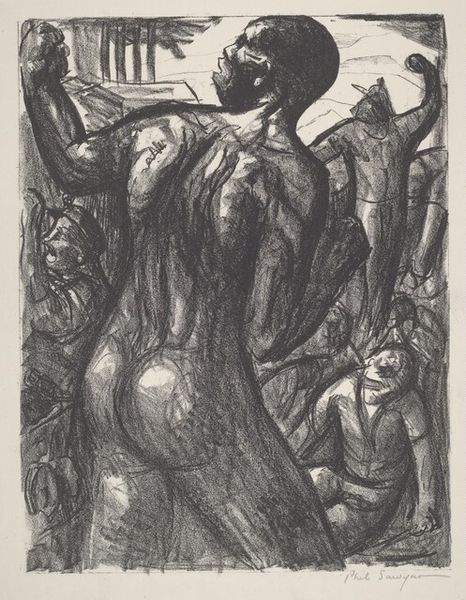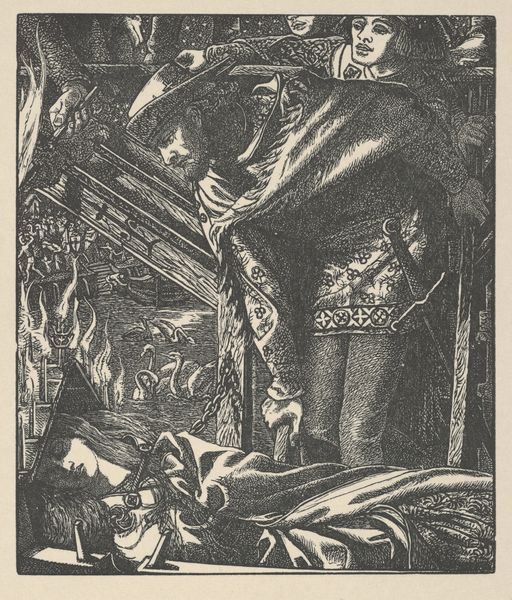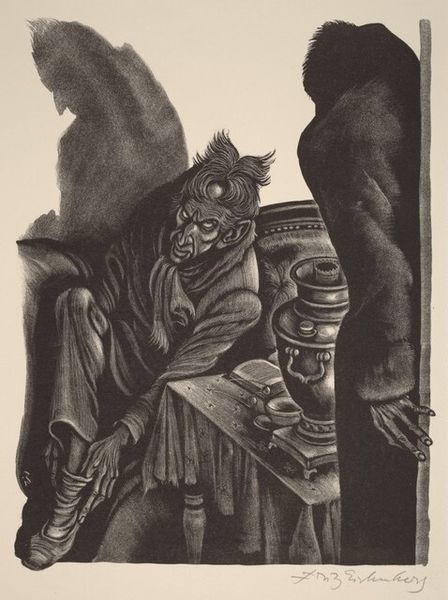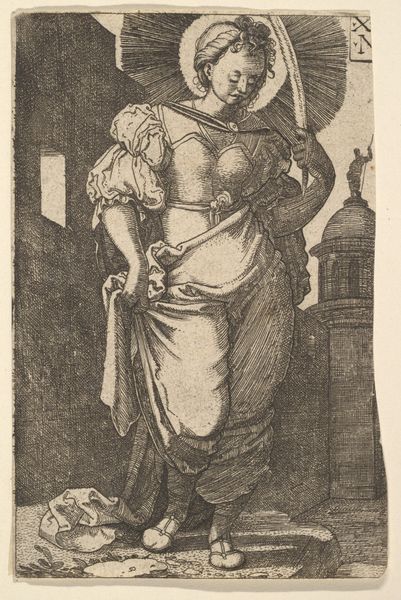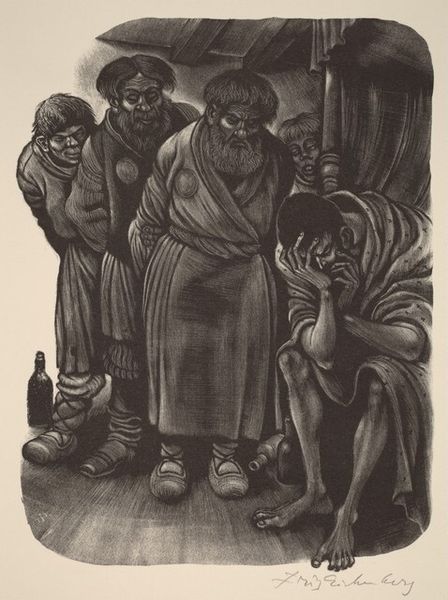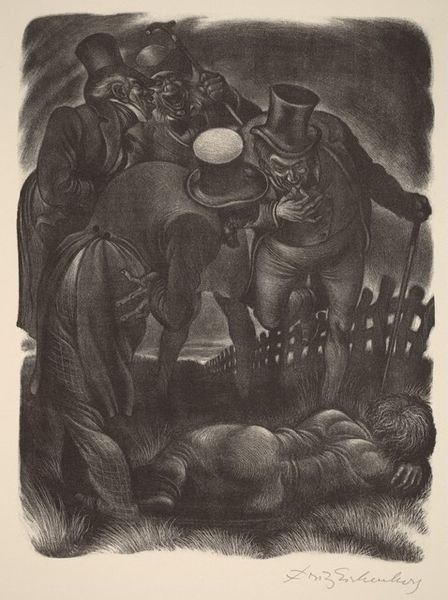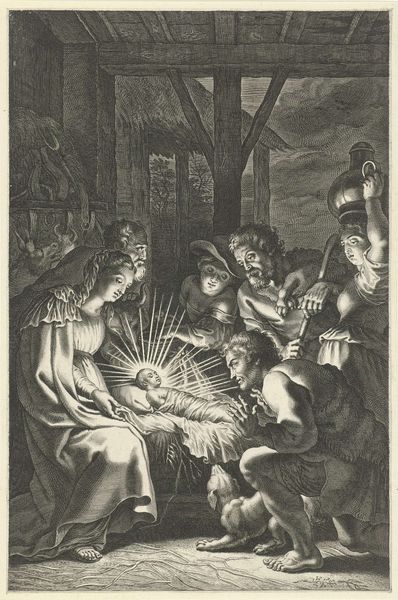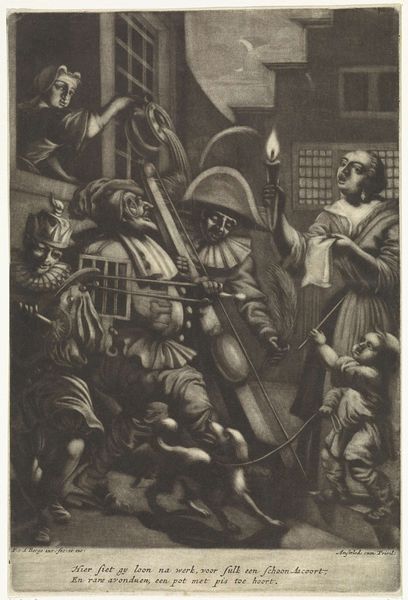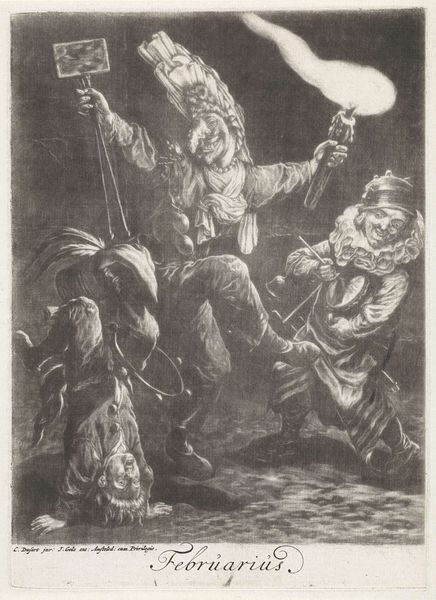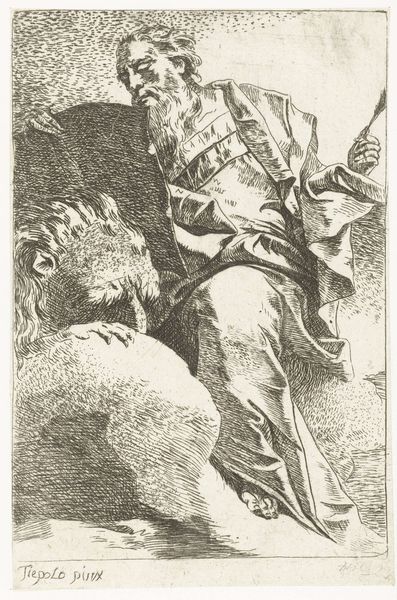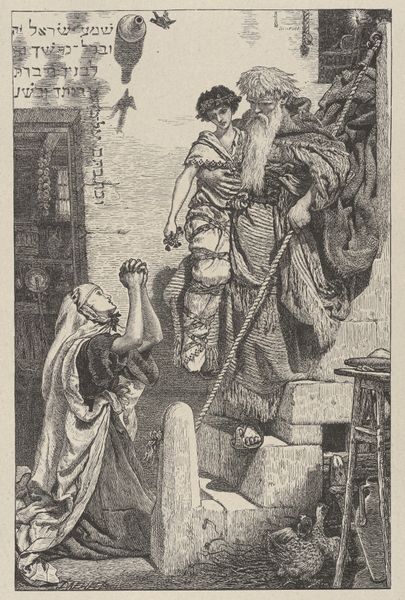
drawing, print, etching, paper
#
drawing
#
baroque
# print
#
etching
#
figuration
#
paper
#
history-painting
Dimensions: 217 × 168 mm (image/plate); 220 × 180 mm (sheet)
Copyright: Public Domain
Jan Georg van Vliet created this print, Christ Taken, in the Netherlands in the 17th century. Van Vliet was a member of Rembrandt’s workshop, and this piece shows the master’s influence. We see the moment when Christ is betrayed by Judas Iscariot. The kiss is meant to signal Christ to the armed soldiers, who are crammed into the upper left of the frame. Van Vliet uses the etching to explore themes of betrayal and religious conflict, which were of particular interest in the Dutch Republic at this time. The Dutch had only recently won independence from the Catholic Spanish Empire, and religious tensions still simmered. Was van Vliet questioning authority? To more fully understand this print, we can consult period sources such as religious pamphlets and political tracts. Close attention to the social and institutional context of art can reveal its meaning as something more than aesthetic.
Comments
No comments
Be the first to comment and join the conversation on the ultimate creative platform.
